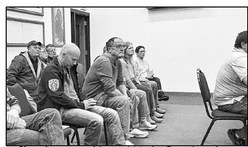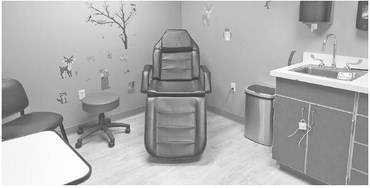City needs long-range sidewalk plan


The city of Medford needs a long-range pedestrian transportation plan, rather than its current piecemeal approach to sidewalk installation.
On May 5, the city of Medford will hold a special meeting to discuss the city sidewalk ordinance with a particular focus on how cul-de-sacs should be handled.
Existing city code calls for the installation of sidewalk on at least one side of the road during road reconstruction projects. The side of the street the sidewalk is on is left up to the public works department based on things like presence of utility lines. The goal of having public works decide on places being not to cause more work and expense for the city in the future if the lines need to be dug up.
Because it is most efficient, and least disruptive to homeowners to do the sidewalk work when the road is already being torn up, the city generally does this.
The intent of the code was to prevent annual drama at city hall as vocal sidewalk opponents would argue that their neighborhood shouldn’t have sidewalks. These arguments typically have boiled down to perception of the sidewalks being too close to their homes and, more often, not wanting to have the responsibility of clearing snow from them. For the most part, the codes have met their goal with the amount of city hall drama greatly reduced from decades ago.
The challenge of the current system is that residential reconstruction projects in the city are driven by the condition of the underground utilities. This makes sense from a project mobilization standpoint.
Unfortunately, the city is entering into a phase where utility-driven reconstruction projects will be impacting cul-de-sac neighborhoods. This presents a challenge with a strong argument to be made that sidewalks should be installed completely around the end of a cul-de-sac, since there is only one side of those streets and all sidewalks increase pedestrian safety and make a community more walkable.
An equally compelling argument can be made that the pedestrian safety concerns do not exist to the same level in the end of a cul-de-sac, which in Medford generally only have a handful of houses on them.
Another challenge in attempting to set a rule for all culde- sacs is that they are not all created equal. Some have long roads leading to a cul-de-sac, similar to a Q-tip with the stick ending in the cotton swab bulb end. Others have a road leading to them and are simply the bulb end with a single access point onto a larger road.
Under current code, there is little doubt that the section of street leading to the end of the cul-de-sac should have sidewalk installed along it, just as any other residential street in the city should.
Rather than argue block by block, the city of Medford needs a citywide plan for sidewalks and other pedestrian/ non-motorized pathways to connect where people live with shopping, recreation, work, and government offices. These pedestrian networks may or may not follow the existing roads and should be based on things like traffic counts, safety and building connections between areas of the city.
It is easier for residents and policy makers to understand sidewalks being installed if it is part of a broader, long-range plan that can be shown to answer the question that “Yes,” the sidewalk goes somewhere or at least will in the future.
Without a long-range plan in place, arguing over culde- sac sidewalks is a like arguing over the shape of leaves in a forest.



